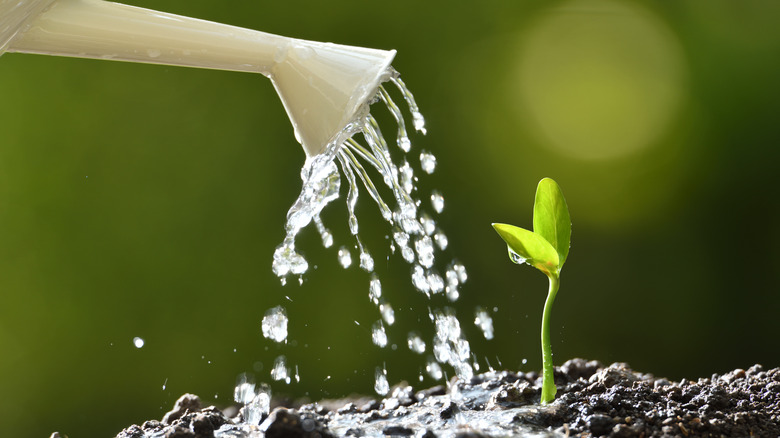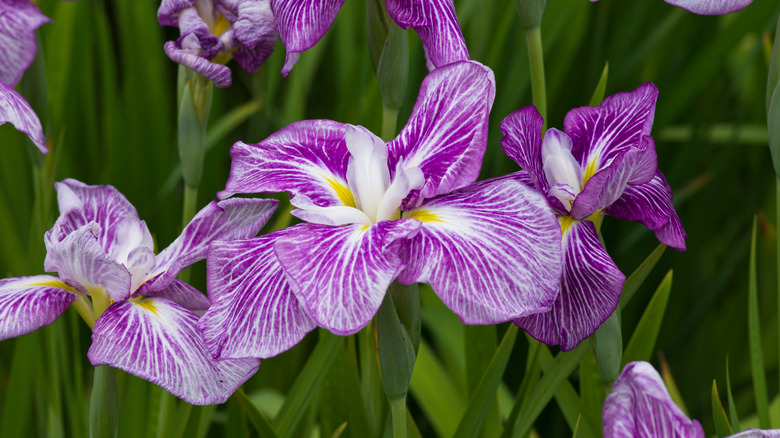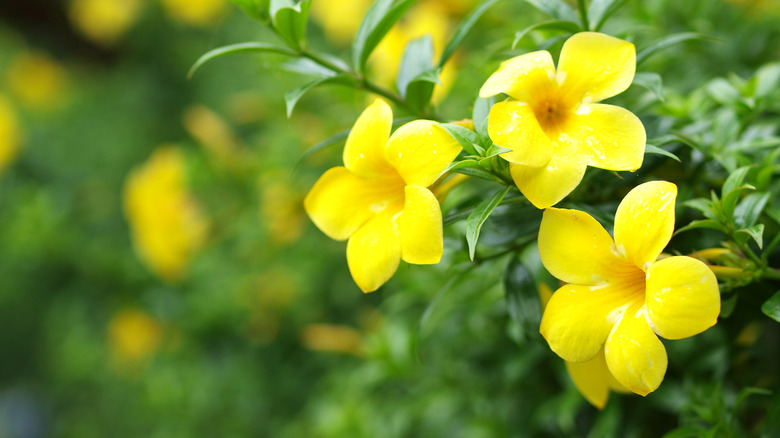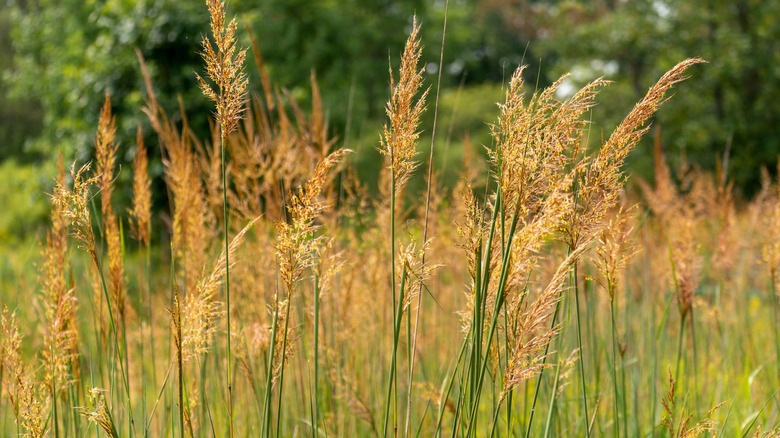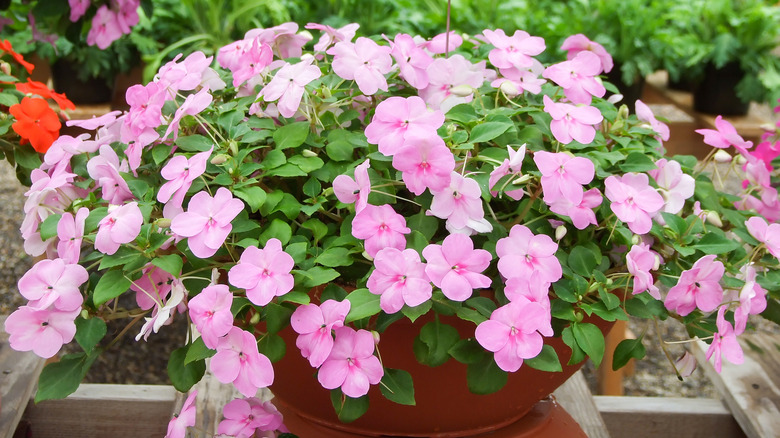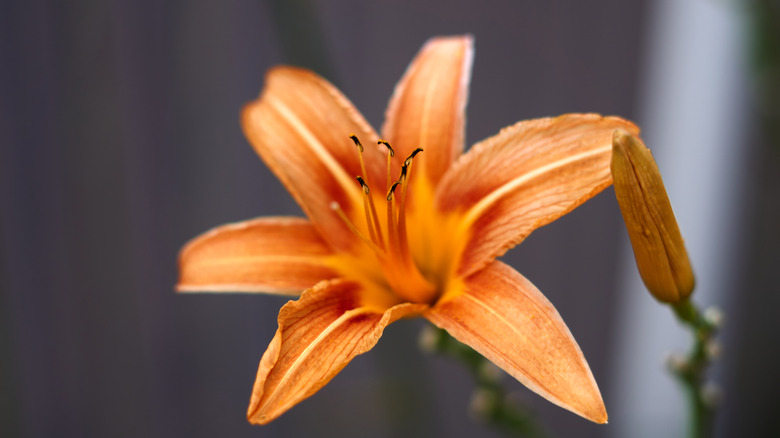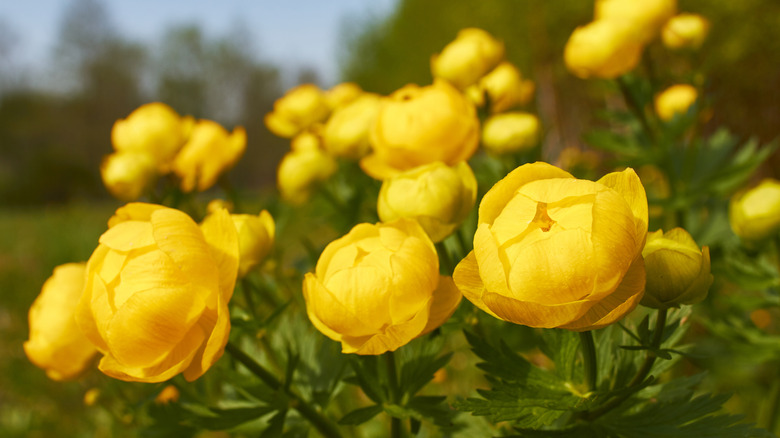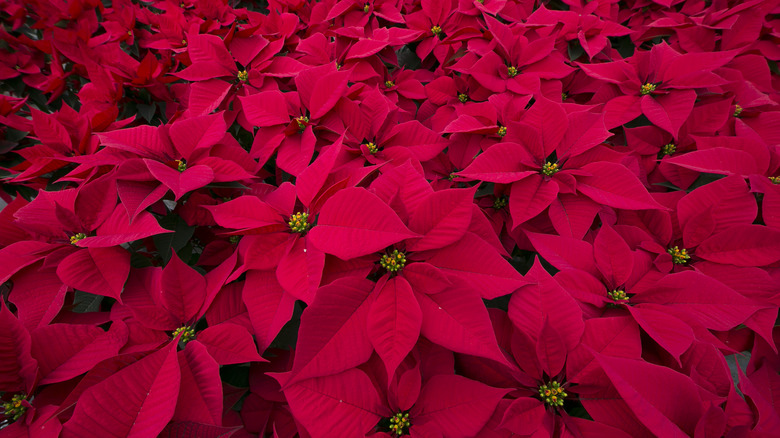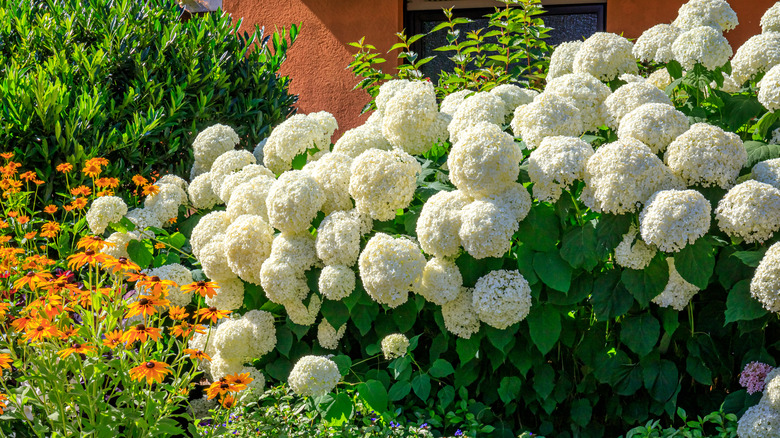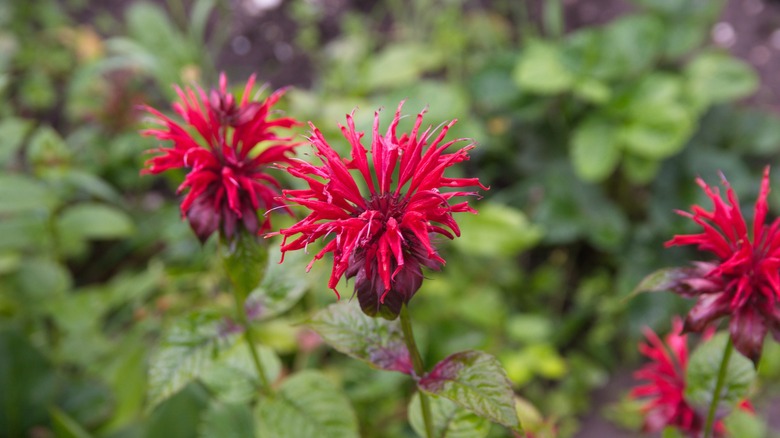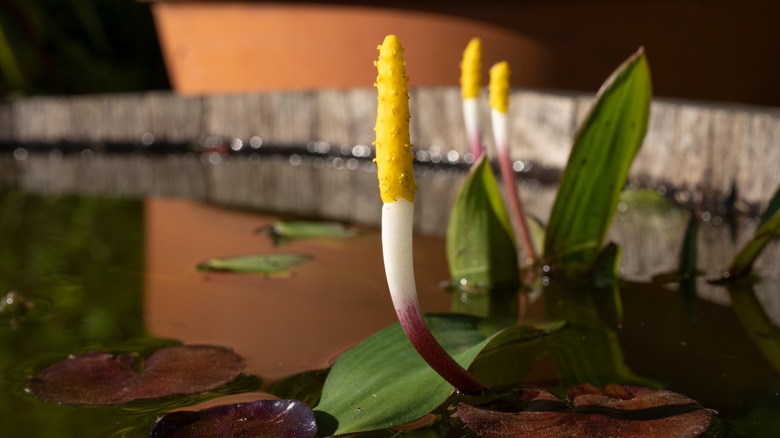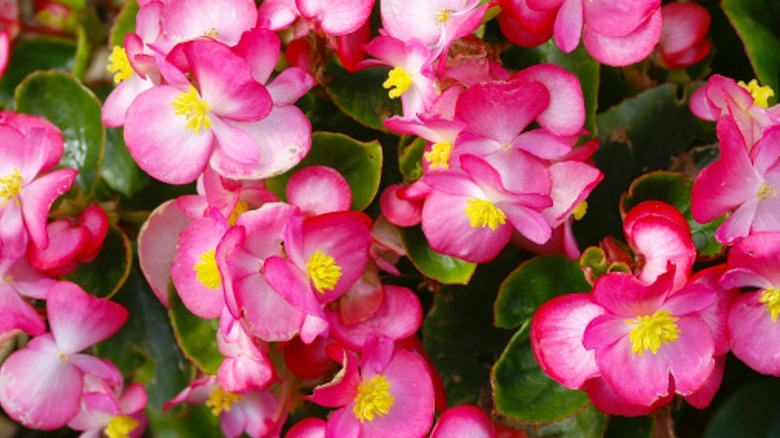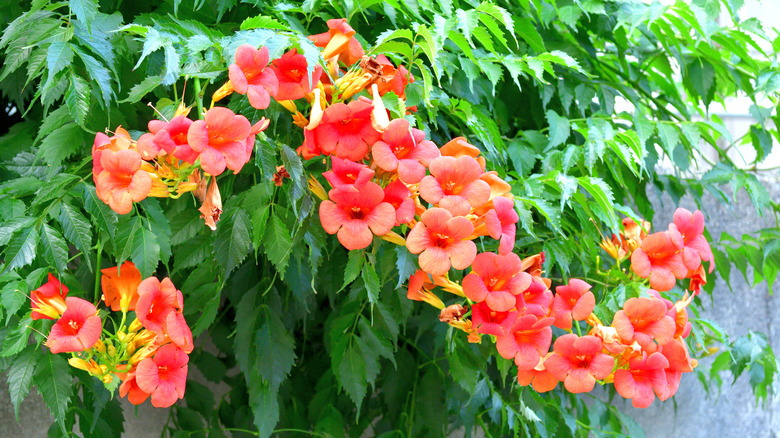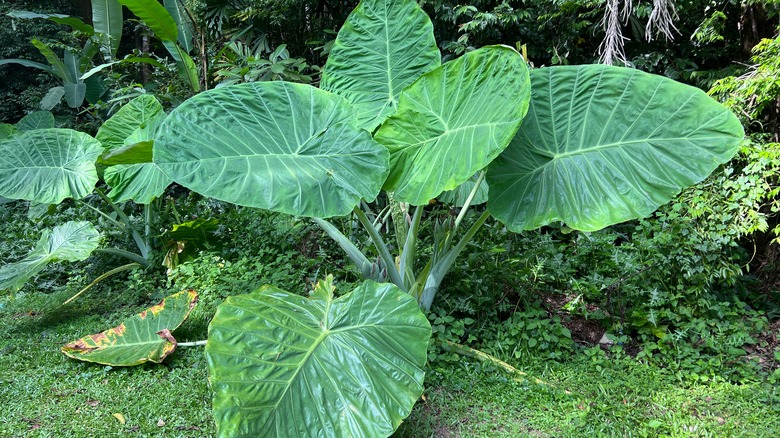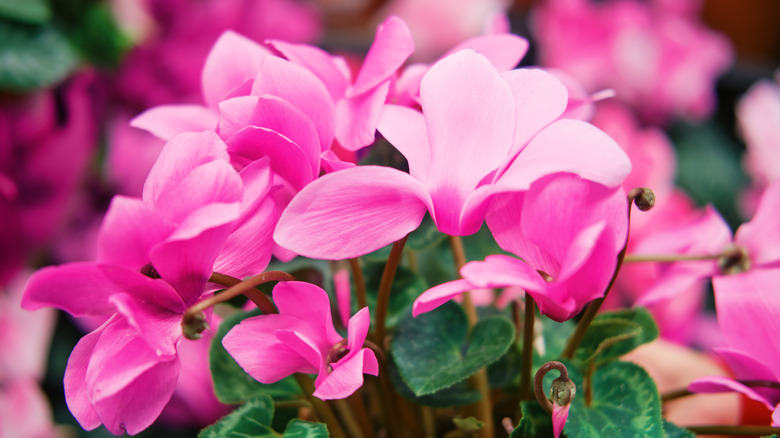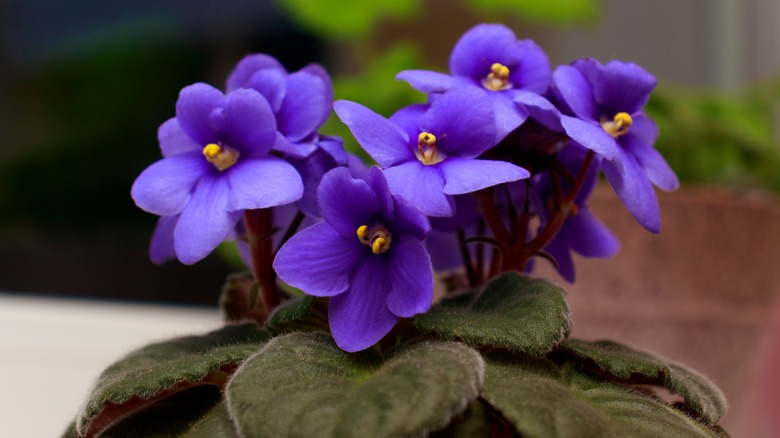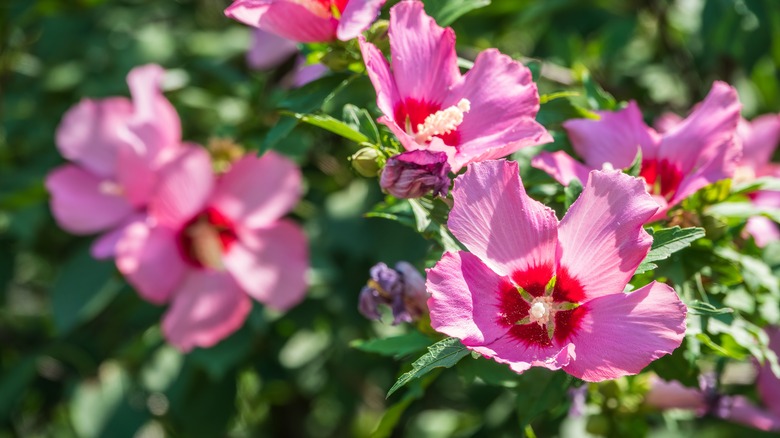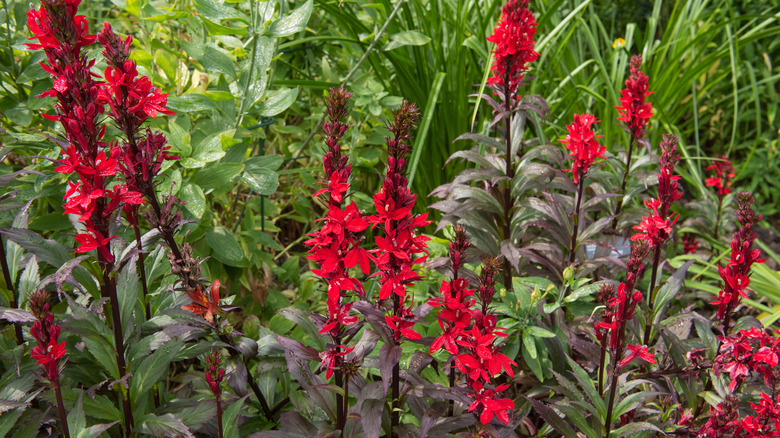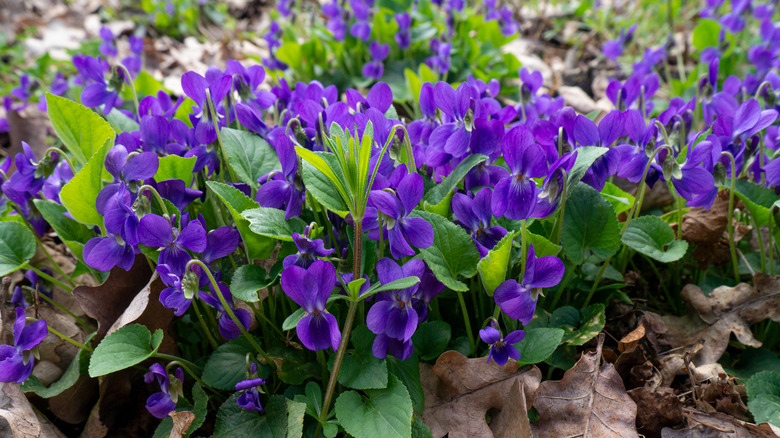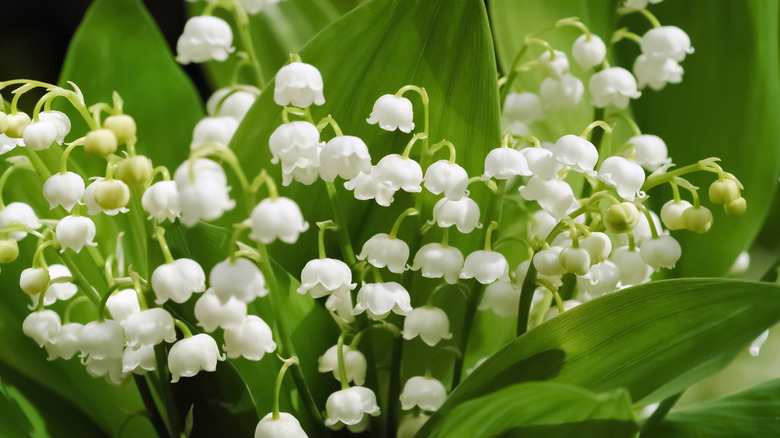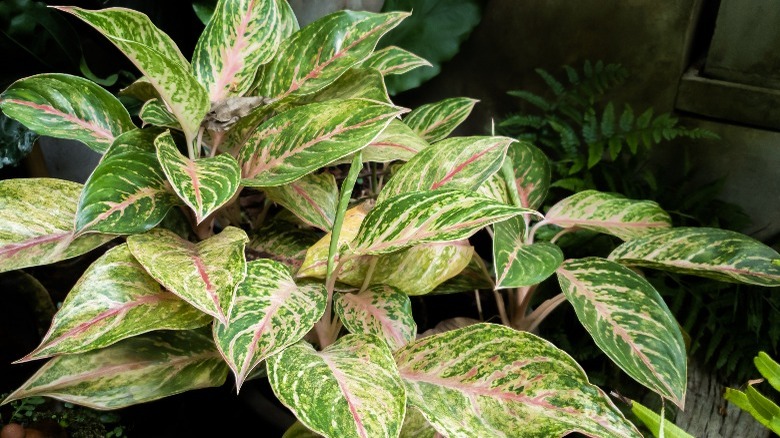Plants That Need To Be Watered Constantly
Regions that receive lots of sunlight and warm weather can support some of the most beautiful plants. Year-round you can grow blooming flowers, exotic foliage, and lush ornamental species with the right technique. However, what some excited yet inexperienced gardeners overlook is these plants' water needs. Many of our favorite species need near-constant watering on top of requiring high temperatures and frequent exposure to sunlight. And, depending on where you live, providing this can prove impossible.
Here, we collected 20 popular plants that you may not have known need good moisture to survive. The right watering system, soaker hoses, a strict watering schedule, or even the installation of a water feature may allow you to grow these gorgeous plants in your home garden. Yet, those of us living in areas with stricter water use regulations and water rationing should try to avoid planting these water-loving species. Instead, we can opt for drought-tolerant plants that are often just as attractive.
1. Japanese iris
The Japanese iris (Iris ensata), also called the Japanese water iris, is a summer-blooming perennial that flowers in shades of pink, blue, and purple. While it prefers full sun with a bit of shade, it also needs consistently moist soil. It grows best in rain gardens and on the banks of freshwater ponds and streams.
Bloom Season: Summer
USDA Growing Zone: 4 to 9
Growing Conditions: Full sun to partial shade
Soil Type: Acidic, rich, and moisture-retentive
Size: 2 to 4 feet tall and 2 feet wide
2. Carolina jessamine
Carolina jessamine (Gelsemium sempervirens) is a popular flowering species that is commonly grown in the South. It is a vigorously growing vine that can reach taller than 20 feet when cared for properly. Despite being an adaptable plant that can survive in a range of soil types, it does need quite a bit of watering to grow properly, especially while it's still a young plant.
Bloom Season: Spring
USDA Growing Zone: 6 to 9
Growing Conditions: Full sun to partial shade
Soil Type: Rich and well-draining
Size: 3 to 20 feet tall
3. Indian grass
Indian grass (Sorghastrum nutans) is a tall-growing species that commonly lives in the Midwest and several other parts of the United States as well as Mexico. It's an important grass for wildlife such as birds, butterflies, bees, and moths that use it for shelter. Like Carolina jessamine, it can grow with little water but grows best in moist soil and withstands poor draining soil.
Bloom Season: Fall
USDA Growing Zone: 4 to 9
Growing Conditions: Full sun to full shade
Soil Type: Rich and moisture-retentive
Size: Up to 8 feet tall
4. Impatiens
Impatiens (Impatiens walleriana) are popular flowers for growing as bedding plants, but they are also often planted in hanging planters, small spaces, and even as houseplants. They are technically perennial flowers; however, due to their need for consistently warm weather and high humidity, they are commonly grown as annuals.
Bloom Season: Summer, spring, and fall
USDA Growing Zone: 10 to 11
Growing Conditions: Full to partial shade
Soil Type: Organic, moist, and well-draining
Size: 6 inches to 2 feet tall
5. Daylilies
The immensely popular daylily flower (Hemerocallis spp.) is known for its no-fuss nature that allows it to grow in a range of conditions for many years. It's delightfully fragrant, easy to grow, and long-blooming. If you are planning on growing a patch of them in your garden, you should try to keep them plenty moist. Deep watering once per week should suffice, but drier climates may require more frequent attention.
Bloom Season: Summer to fall
USDA Growing Zone: 3 to 10
Growing Conditions: Full sun
Soil Type: Moist and well-draining
Size: 1 to 3 feet tall and wide
6. Globeflower
The globeflower (Trollius europaeus), which is a member of the buttercup family, is well-known for its spherical blossoms that feature many yellow petals. A shade-loving and water-loving plant, the perennial flower should be kept in a protected location in humusy soil. Unlike everything you've heard about watering other plants, the globeflower is better off if it's overwatered.
Bloom Season: Spring and summer
USDA Growing Zone: 3 to 6
Growing Conditions: Full to partial shade
Soil Type: Rich, humusy, and wet
Size: 18 to 24 inches tall and 12 to 18 inches wide
7. Poinsettias
Likely you are familiar with the Christmas flower, poinsettias (Euphorbia pulcherrima). Their iconic red bracts that look like large flowers are commonly used during the Christmas season as they are one of the few winter-blooming plants. Even though they are associated with snow and hot cocoa, poinsettias are actually very sensitive to the cold and can't grow in USDA zones below 9.
Bloom Season: Spring and winter
USDA Growing Zone: 9 to 11
Growing Conditions: Partial shade
Soil Type: Loamy, moist, and well-draining
Size: 3 to 12 feet tall and 3 to 8 feet wide
8. Big leaf hydrangeas
Big leaf hydrangeas' (Hydrangea macrophylla) water needs are obvious from their name, as "hydra" is Greek for water. Similarly to the Globe flower, the favored shrub likes shade and moist soil. A good thing to keep in mind when growing hydrangeas in your yard is that they are typically able to withstand more direct sunlight when they are provided with more frequent watering.
Bloom Season: Summer
USDA Growing Zone: 6 to 11
Growing Conditions: Dappled sunlight to full shade
Soil Type: Evenly moist and well-draining
Size: 3 to 6 feet tall and wide
9. Bee balm
A flower in the mint family, bee balm (Monarda didyma) is a great option for a range of garden types. The plant attracts many beneficial insects, and they are fairly low-maintenance once established. Of course, the one thing you'll have to look out for is dry soil. The bee balm plant needs good moisture to grow well.
Bloom Season: Fall and summer
USDA Growing Zone: 4 to 9
Growing Conditions: Full sun
Soil Type: Moist and well-draining
Size: 2 to 4 feet tall and 2 to 3 feet wide
10. Golden club
Golden club (Orontium aquaticum) is among the most water-loving plants on this list. It grows in shallow water up to 18 inches deep and its stems and leaves may be submerged. In addition to lots of water, the plant also needs direct sunlight. Growing it near a small body of water is best so that the soil never becomes dry.
Bloom Season: Spring to summer
USDA Growing Zone: 5 to 10
Growing Conditions: Full sun
Soil Type: Organically rich and wet
Size: 1 to 2 feet tall and wide
11. Begonias
The enormous Begonia genus (Begonia spp.) is home to over 1,000 species and even more cultivars. Though they vary widely in habit, color, and flower type, their growth requirements are generally the same. They usually need a bit of shade and consistently moist soil. Seasoned gardeners suggest installing a soaker hose to keep them adequately hydrated while also avoiding getting water droplets on their fragile leaves and blooms.
Bloom Season: Spring and summer
USDA Growing Zone: 8 to 11
Growing Conditions: Full sun to partial shade
Soil Type: Organic, moist, and well-draining
Size: Varies by cultivar
12. Trumpet creeper
The trumpet creeper (Campsis radicans), which goes by many names including cow-itch, devil's shoestring, foxglove vine, and hellvine, is a climbing plant with aerial roots. Native to the United States, it can be found growing naturally in swamps and forests that offer shade and moisture. Such is the case with many other native plants, this one can become aggressive, often choking out weaker plants to spread further.
Bloom Season: Summer
USDA Growing Zone: 4 to 10
Growing Conditions: Full sun to partial shade
Soil Type: Average and moist
Size: 30 to 40 feet tall
13. Elephant ear
Giant elephant ear plants (Colocasia gigantea) are sought after for their huge leaves that can measure 4 feet long. You'd want to grow it in a lush tropical themed-garden. However, you should know what you're in for if you take on the challenge. Not only do they need high humidity and constantly moist soil, but they also need high temperatures, which can be difficult to balance.
Bloom Season: Spring
USDA Growing Zone: 8 to 10
Growing Conditions: Full sun to partial shade
Soil Type: Fertile, rich, and moist
Size: 4 to 7 feet tall and wide
14. Persian cyclamen
Persian cyclamen (Cyclamen persicum), or florist cyclamen as it's also called, is well-liked as a houseplant, but it can also be grown in the garden. The short-growing flower features small pink, purple, or white blooms that show themselves quite early in the season. They prefer growing in loamy and moist soil, which is usually helped by spring rain.
Bloom Season: Winter and spring
USDA Growing Zone: 9 to 11
Growing Conditions: Full to partial shade
Soil Type: Loamy, moist, and well-draining
Size: 6 to 9 inches tall
15. African violets
African violets (Saintpaulia ionantha) are another small flower that is frequently grown as houseplants. This is because it can't grow outdoors in USDA zones below 11. Even though it enjoys growing in shaded areas with moist soil, it also needs high heat and humidity to bloom properly.
Bloom Season: Flowers freely
USDA Growing Zone: 11 to 12
Growing Conditions: Full to partial shade
Soil Type: Moist and well-draining
Size: 6 to 9 inches tall and wide
16. Hardy hibiscus
Hardy hibiscus (Hibiscus moscheutos) is common across the United States where it grows happily in freshwater swamps and marshes. With good care, the beautifully blooming specimen may become as large as 7 feet tall and 4 feet wide. As a reward, it will also produce fragrant flowers that attract bees, butterflies, hummingbirds, and several beneficial insects that will help your garden as a whole.
Bloom Season: Summer
USDA Growing Zone: 5 to 8
Growing Conditions: Full sun
Soil Type: Rich and wet
Size: 4 to 7 feet tall and 3 to 4 feet wide
17. Cardinal flower
Cardinal flowers (Lobelia cardinalis) are known for their spikes of bright red blooms that attract bees, butterflies, and hummingbirds. These plants have a wide native range stretching from Canada to Mexico and they are considered to be quite adaptable. One thing they have a hard time compromising on, however, is their need for water. They almost exclusively grow in wet areas like swamps, marshes, and alongside freshwater streams.
Bloom Season: Summer
USDA Growing Zone: 3 to 9
Growing Conditions: Full sun to partial shade
Soil Type: Rich and moist
Size: 2 to 4 feet tall and wide
18. Violets
The scented violet flower (Viola odorata) is a low-growing plant that blooms in the spring. It grows best in just a bit of shade in undisturbed locations away from more aggressive plants. For animals and humans, the leaves and flowers of the plants are edible and they can be used in salads or desserts.
Bloom Season: Spring
USDA Growing Zone: 4 to 9
Growing Conditions: Full sun to partial shade
Soil Type: Moist and well-draining
Size: 4 to 6 inches tall and wide
19. Lily of the Valley
Lily of the valley flowers (Convallaria majalis) offer out-of-this-world blooms in exchange for good care. Even when they aren't in bloom, the foliage is lush and acts as a great backdrop for other plants in your garden. In the summer, established plants can withstand some drought, but lilies of the valley really prefer moist soil and plenty of shade.
Bloom Season: Early spring and summer
USDA Growing Zone: 3 to 9
Growing Conditions: Full to partial shade
Soil Type: Moist and organically rich
Size: Grows up to 1 foot tall and 1 foot wide
20. Chinese evergreen fern
Chinese evergreen ferns (Aglaonema spp.) are normally grown indoors where they are perpetually shaded and kept under a close eye. Still, they can be planted outdoors. In the garden, Chinese evergreen ferns should be planted in moisture-retentive soil and kept out of sunlight. They also need to be grown in a protected area away from children and pets as their sap is very poisonous.
Bloom Season: Summer
USDA Growing Zone: 10 to 11
Growing Conditions: Partial to full shade
Soil Type: Acidic and moisture-retentive
Size: 1 to 3 feet tall and wide
